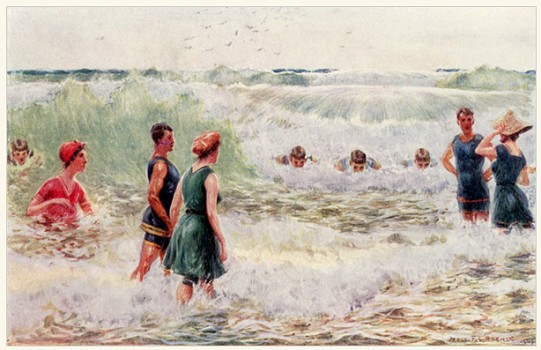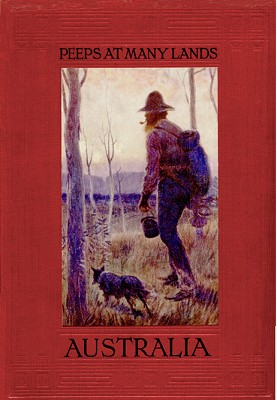 |
surfresearch.com.au
fox : surf bathng in australia, 1911 |
| home | catalogue | history | references | appendix |
|
Project Gutenberg
http://www.gutenberg.org/files/25976/25976-h/25976-h.htm#beach
Few European or
American children can enjoy such sea beaches as are scattered all over
the Australian coast.
They are beautiful
white or creamy stretches of firm sand, curving round bays, sometimes just
a mile in length, sometimes of huge extent, as the Ninety Miles Beach in
Victoria.
The water on
the Australian coast is usually of a brilliant blue, and it breaks into
white foam as it rolls on to the shelving sand. Around Carram, Aspendale,
Mentone and Brighton, near Melbourne; at Narrabeen, Manly, Cronulla, Coogee,
near Sydney; and at a hundred other places on the Australian coast, are
beautiful beaches.
You may see on
holidays hundreds of thousands of people—men, women, and children—surf-bathing
or paddling on the sands.
It is quite safe
fun, too, if you take care not to go out too far and so get caught in the
undertow.
Sharks are common
on the Australian coast, but they will not venture into the broken water
of surf beaches.
But you must
not bathe, except in enclosed baths in the harbours, or you run a serious
risk of providing a meal for a voracious shark.
Sharks are quite
the most dangerous foes of man in Australia.
There have been
some heroic incidents arising from attacks by sharks on human beings.
An instance:
On a New South Wales beach two brothers were bathing, and they had gone
outside of the broken surf water.
One was attacked
by a shark.
The other went
to his rescue, and actually beat the great fish off, though he lost his
arm in ...
Page 24
... doing so.
As a rule, however,
the shark kills with one bite, attacking the trunk of its victim, which
it can sever in two with one great snap of its jaws.
Children on the
Australian coast are very fond of the water.
They learn to
swim almost as soon as they can walk.
Through exposure
to the sun whilst bathing their skin gets a coppery colour, and except
for their Anglo-Saxon eyes you would imagine many Australian youngsters
to be Arabs.
Page 73

 |
 |

| home | catalogue | history | references | appendix |